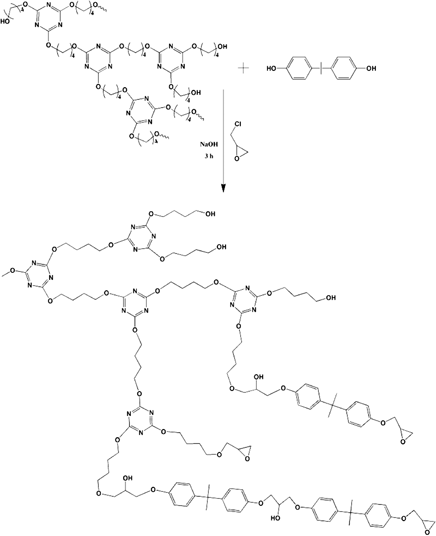Crossref Citations
This article has been cited by the following publications. This list is generated based on data provided by
Crossref.
De, Bibekananda
Gupta, Kuldeep
Mandal, Manabendra
and
Karak, Niranjan
2014.
Biodegradable Hyperbranched Epoxy from Castor Oil-Based Hyperbranched Polyester Polyol.
ACS Sustainable Chemistry & Engineering,
Vol. 2,
Issue. 3,
p.
445.
Liu, Yuan
Wang, Juan
and
Xu, Shiai
2014.
Synthesis and curing kinetics of cardanol-based curing agents for epoxy resin by in situ
depolymerization of paraformaldehyde.
Journal of Polymer Science Part A: Polymer Chemistry,
Vol. 52,
Issue. 4,
p.
472.
DE, BIBEKANANDA
and
KARAK, NIRANJAN
2014.
A room temperature cured low dielectric hyperbranched epoxy adhesive with high mechanical strength.
Journal of Chemical Sciences,
Vol. 126,
Issue. 3,
p.
587.
Roy, Buddhadeb
Bharali, Pranjal
Konwar, B. K.
and
Karak, Niranjan
2014.
Modified hyperbranched epoxy/clay nanocomposites: A study on thermal, antimicrobial and biodegradation properties.
International Journal of Materials Research,
Vol. 105,
Issue. 3,
p.
296.
Li, Feihu
Tang, Bingtao
Wu, Suli
Ma, Wei
and
Zhang, Shufen
2017.
Bright structural coloration from organic polymeric photonic crystals with robust heat-resistance.
Journal of Materials Chemistry C,
Vol. 5,
Issue. 37,
p.
9806.
Saikia, Aditi
and
Karak, Niranjan
2017.
Renewable resource based thermostable tough hyperbranched epoxy thermosets as sustainable materials.
Polymer Degradation and Stability,
Vol. 135,
Issue. ,
p.
8.
Wang, Yimei
Chen, Sufang
Chen, Xianchao
Lu, Yanfen
Miao, Menghe
and
Zhang, Daohong
2019.
Controllability of epoxy equivalent weight and performance of hyperbranched epoxy resins.
Composites Part B: Engineering,
Vol. 160,
Issue. ,
p.
615.
Huang, Weian
Lei, Ming
Li, Gongrang
Wang, Yongchao
Du, Kun
Chen, Weiqing
and
Qiu, Zhengsong
2020.
Surface coating on solidified water‐based drilling waste materials and its mechanism for resource reuse.
Journal of Chemical Technology & Biotechnology,
Vol. 95,
Issue. 8,
p.
2149.
Karak, Niranjan
2021.
Sustainable Epoxy Thermosets and Nanocomposites.
Vol. 1385,
Issue. ,
p.
1.
Robertson, Mark
Obando, Alejandro Guillen
and
Qiang, Zhe
2022.
Interfacial Engineering Approach to Pattern Resilient Polymer Photonic Crystals with Temperature‐Responsive Optical Properties.
Advanced Materials Interfaces,
Vol. 9,
Issue. 10,
Aronovich, D. A.
2023.
A Review of Modern Adhesive Materials Operating in a Wide Temperature Range. Epoxy Adhesives.
Polymer Science, Series D,
Vol. 16,
Issue. 1,
p.
14.
Li, Guang-Zhao
Wang, Qiuhong
Zhu, Chongyu
Zhang, Shuai
Wang, Fumei
Tao, Lei
Jiang, Youqi
Zhang, Qiang
Wang, Wenyan
and
Han, Rui
2025.
Synthesis and Performance of Epoxy-Terminated Hyperbranched Polymers Based on Epoxidized Soybean Oil.
Molecules,
Vol. 30,
Issue. 3,
p.
583.



